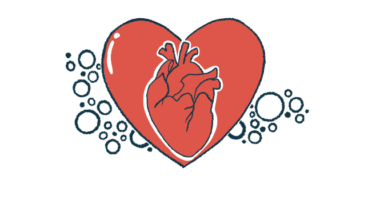Raising awareness of Fabry disease
Last updated May 30, 2024, by Susie Strachan

Because Fabry disease can cause symptoms, such as chronic pain, that can be quite stressful to deal with, patients and caregivers often require support and their needs championed.
If you or a family member has a rare disorder such as Fabry disease, you may want to consider getting involved with health advocacy efforts.
Fabry disease advocacy promotes awareness of the disorder to help improve available healthcare services and influence policies to better support the needs of the Fabry community.
What is Fabry disease?
Fabry disease is a progressive rare genetic disease caused by the abnormal buildup of a type of fat called globotriaosylceramide (Gb3 or GL-3) in cells.
It is an X-linked disorder, which is why it is generally more likely to be reported in men, as they have only one X chromosome (whereas women have two X chromosomes).
The disease is classified into two forms — classic and late-onset. Getting diagnosed with Fabry may take time as it is a rare disease. Your healthcare provider may request genetic or enzyme testing for a definitive diagnosis.
Fabry disease symptoms can include chronic pain, kidney damage, gastrointestinal and cardiac issues, and problems with eyesight and hearing.
Therefore, living with Fabry disease can be challenging. People with the disease and their caregivers may benefit from Fabry disease support groups to cope with the physical and mental difficulties. These support groups are a way to connect with others who understand your experiences, to share coping strategies, and to learn about resources for managing Fabry disease.
Why is greater awareness important?
Increased awareness about Fabry disease can help improve access to care and support and also contributes to the broader goal of advancing medical knowledge about this rare illness.
Patient-centered care is a key goal of health advocacy. Other goals include safer medical systems and more patient involvement in healthcare delivery and design.
Advocates support and promote the healthcare rights of patients. They can also help to improve community health and enhance policy initiatives that are focused on available, safe, and quality healthcare.
Advocates can also identify emerging public health issues that require action. They gather information related to public health, monitor related legislation, and provide feedback on how certain issues affect communities. They may also help guide health policy reforms.
Advocacy is typically carried out using multimedia platforms, political lobbying, and community mobilization.
As Fabry is a rare disease, greater awareness can help improve opportunities for diagnosis, including broader newborn screening. Earlier detection of Fabry disease means more people can receive timely and appropriate treatment.
The power of advocacy
Advocacy can be a personal endeavor and also connect you to the wider Fabry disease community. This may involve learning to speak up for yourself during healthcare appointments, educating yourself about the disease, joining support groups, and connecting to community resources.
Both in-person and online support groups offer emotional support, practical guidance, and access to educational materials. Meeting others who share the same experiences and challenges of living with Fabry can help you feel empowered.
The following national organizations offer support and resources for people with Fabry and their caregivers, including opportunities to become an advocate:
Becoming an advocate for Fabry disease can involve raising awareness, providing support to others with the condition, advocating for health policy change, participating in research, and building a supportive community.
You might consider:
- attending awareness events, such as the Fabry Family Education Conference, or other meetings, to connect with others who have Fabry, healthcare professionals, and researchers
- lobbying policymakers and participating in advocacy campaigns, with the goal of improving access to healthcare, insurance coverage, research funding, and support services for people with Fabry disease
- participating in clinical trials for potential new Fabry disease treatments.
The U.S. government-run Rare Diseases Registry Program, called RaDaR, seeks to help patient advocacy groups with limited resources develop their own disease registries. Registries can be important to understanding disease development and characteristics.
The Fabry disease registry is an international and multicenter observational study that tracks clinical outcomes in Fabry patients. If interested, ask your doctor to enroll you in the registry. The data may contribute to a greater understanding of Fabry disease, its care, and the development of future therapies.
Fabry disease awareness month
Fabry Disease Awareness Month is observed annually in April. During the month, patient advocacy groups, healthcare professionals, and anyone affected by Fabry disease come together to raise awareness about the condition.
Raising awareness among healthcare providers is key to improving recognition of the symptoms that could indicate and help diagnose Fabry disease.
There is also Rare Disease Day, which takes place on the last day of February each year. Its objective is to raise awareness among the general public and decision-makers about rare diseases such as Fabry disease and their impact on people’s lives.
Global organizations
International organizations that provide online resources, news, webinars, and other Fabry disease resources include:
- Fabry International Network
- Canadian Fabry Association
- MPS Society in the U.K.
- Femexer in Mexico
- Fabry Australia.
To find other similar organizations around the globe, check the peers link on the Fabry International Network website.
Pharmaceutical companies
Pharmaceutical companies have dedicated websites for the specific medications they market. These support websites not only provide information about the disease and the medications but often offer access to personalized support throughout the course of your treatment.
Approved treatments for Fabry disease include:
- enzyme replacement therapies, which deliver a functional alpha-galactosidase A enzyme, the enzyme that is non-functional or missing in people with Fabry
- chaperone therapy, which uses small molecules to stabilize and enhance the function of the defective alpha-galactosidase A enzyme within cells.
Useful resources
Along with working closely with your Fabry healthcare team, you may want to reach out to other professionals for emotional support and financial advice.
Mental health services, such as counseling or therapy, can help you and your family by teaching you coping strategies for dealing with the emotions of living with a debilitating illness.
Treatment and management can be costly, so it may be beneficial to connect with a financial advisor to help develop a plan for paying medical expenses and other related health costs.
Finally, Fabry Disease News can help you stay abreast of developments in the field. The site offers information about the disease, health insights, approved treatment options, experimental therapies being developed, the latest news in ongoing research, information about ongoing and upcoming clinical trials, and more.
Fabry Disease News is strictly a news and information website about the disease. It does not provide medical advice, diagnosis, or treatment. This content is not intended to be a substitute for professional medical advice, diagnosis, or treatment. Always seek the advice of your physician or other qualified health provider with any questions you may have regarding a medical condition. Never disregard professional medical advice or delay in seeking it because of something you have read on this website.
Recent Posts
- Life must go on, even when Fabry disease symptoms flare up
- Fabry disease treatment ST-920 improves kidney function: Data
- Unexpected health events are part of my life with Fabry disease
- Blood biomarkers may reflect disease activity, kidney function
- Real-world study shows burden of heart, other complications in Fabry
- Study identifies eye changes in Fabry that could affect vision
- 5 tips for helping teens with Fabry disease to thrive
- Death of bone tissue a rare, painful Fabry complication: Case report
- Long-term agalsidase alfa shows benefits as Fabry disease treatment
- Sangamo hits milestone toward accelerated approval for ST-920
Related articles






